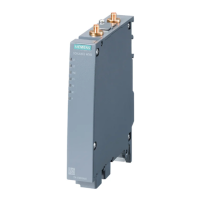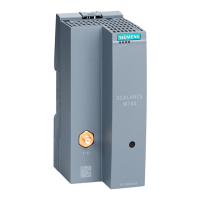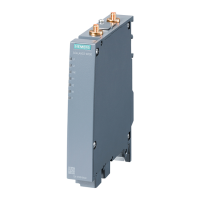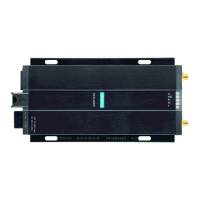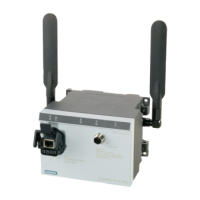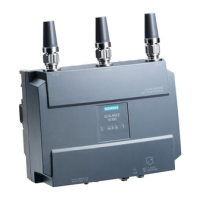IP addresses
5.3 IPv6 address
SCALANCE W780/W740 to IEEE 802.11n Web Based Management
84 Configuration Manual, 08/2018, C79000-G8976-C267-13
Extended Unique Identifier (RFC 4291); method for forming the interface ID. In Ethernet, the
interface ID is formed from the MAC address of the interface. Divides the MAC address into
the manufacturer-specific part (OUI) and the network-specific part (NIC) and inserts FFFE
between the two parts.
Example:
MAC address = AA:BB:CC:DD:EE:FF
OUI = AA:BB:CC
NIC = DD:EE:FF
EUI-64 = OUI +
+ NIC = AA:BB:CC:
:DD:EE:FF
Defines the range of the IPv6 address.
Structure of an IPv6 address
IPv6 address format - notation
IPv6 addresses consist of 8 fields each with four-character hexadecimal numbers (128 bits in
total). The fields are separated by a colon.
Example:
fd00:0000:0000:ffff:02d1:7d01:0000:8f21
Rules / simplifications:
● If one or more fields have the value 0, a shortened notation is possible.
The address fd00:
:ffff:02d1:7d01:0000:8f21 can also be shortened and written
as follows:
fd00
ffff:02d1:7d01:0000:8f21
To ensure uniqueness, this shortened form can only be used once within the entire
address.
● Leading zeros within a field can be omitted.
The address fd00:0000:0000:ffff:
:7d01:0000:8f21 can also be shortened and written
as follows:
fd00
ffff:
:7d01:0000:8f21
● Decimal notation with periods
The last 2 fields or 4 bytes can be written in the normal decimal notation with periods.
Example: The IPv6 address fd00::ffff.125.1.0.1 is equivalent to fd00::ffff:7d01:1

